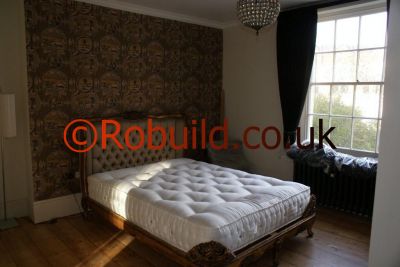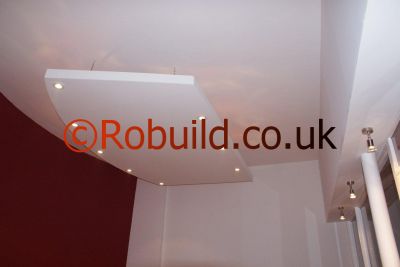Electricians London
Electrical Faults, Electric Boiler Installs, Electrical Repairs, Electric Services, Electric Lighting, Electric Showers,Electric Cookers and Hobs, Electrical Safety Certificates, PAT Testing

Electricians London
Electrical Faults, Electric Boiler Installs, Electrical Repairs, Electric Services, Electric Lighting, Electric Showers,Electric Cookers and Hobs, Electrical Safety Certificates, PAT Testing

Living areas
The living room and dining room are likely to call for flexibility of approach. The lighting requirements of a family breakfast will be very different from those of a sophisticated dinner party in the same dining room. And you may want the option of lighting only certain areas of an open plan room, so that you can ‘lose’ the kitchen while dining, or simply highlight the areas you need.

The variety of effects you will need can best be produced by using several different lighting methods, each of which has a wide range of practical and decorative uses. With direct lighting, such as spotlights, 90% of the light falls downwards and, although it can be very harsh, it gives a strong clear light where needed. This is ideal for reading or paper work. I f the fittings are imaginatively positioned, this strong light will also bring out the form and texture of objects illuminated, and can be effective when directed onto a special ornament or other room feature. Semi-direct lighting also falls mainly downwards but gives a softer effect as some of the light diffuses around it. General-diffused lighting is equally distributed upwards and downwards.
This is the effect you get from most glass fitments, and round paper lampshades for example. The light is usually quite bright and generally useful, but it usually needs to be supplemented for activities that need strong light and dimmed for intimate atmosphere. Semi-indirect lighting has to be used with care. It throws a small amount of light downwards and tends to give a rather dull, fiat effect. (And yet, with a pendant fitting, this is the most commonly used lighting in the average living room.)
In attractive wall or movable fitments, however, semi-indirect lighting can give a gently relaxing background light. Ceilings would seem to benefit most from indirect lighting as it gives more than 90% upward light, but it does produce a shadowless, completely dull appearance. Depending on colour and intensity, it could vary from being bright and practical in the kitchen, to being soft and warm in another room. Otherwise indirect uplighters can add a touch of glamour to a wall of long curtains as long as they are positioned safely away from the fabric.
A centre light is generally not adequate on its own in a bedroom and most people have bedside light fitments. The traditional, shaded light, however, can cast shadow and spread a diffuse light over the whole room/ Although the effect may be attractive, many people enjoy reading in bed and it can be infuriating if your partner is reading when you want to sleep and the light disturbs you. This can be prevented by fitting low voltage spot lights at each side of the bed. the light will be bright enough for reading, can be angled in a suitable direction, and will leave the rest of the room in deep shadow. If you have an alcove bedroom, a soft hidden light behind a bed alcove will add a glamorous touch to the bedroom.

Mirrors, particularly make-up mirrors, cabinets and tables, always need to be lit clearly. Lights positioned at either side of the glass will fall directly on the user and avoid too much glare. Or a strip light along the top is an adequate alternative.
Safety should be of first importance when planning the lighting in your home. Potential accident spots must be clearly lit at all times, especially if there are very young, elderly or short-sighted members in the family. Stairs usually present the main hazard. All stairs whether a full flight up to another floor or a couple of steps between levels, should be lit so that the beginning of the flight, and the nosings of the treads are quite obvious.

Although you may know about those two unexpected steps down to the kitchen, a visitor could trip on them and fall. Staircases are best lit from the tops of the flights so that the rises are in shadow and the shadow on the risers, however, an infill light below the flight is also recommended. And it may be necessary to keep stairs and halls lit artificially during the day, as they often have inadequate natural light sources. Few people consider the necessity for special night-time lighting, but it can be important.
A child may have a nightmare and need reassuring; you may have to go to the bathroom; the telephone or front door bell may ring. Many emergencies can occur in the middle of the night. Switching on lights at their normal level of intensity in a blackened room can cause temporary blindness—enough for someone to misjudge the top of the stairs. So, at night, a much lower lighting level is required for safe movement.
The staircase, corridors, bathroom area can be lit effectively with 15 watt night lights and at this wattage, the cost of running the lights all night would be negligible. Regular night risers people on shift work, or mothers with young babies to feed, for example, might also find an additional low wattage switched light useful, that they can turn on by the bed.
A hall can often benefit greatly from careful lighting as it is so often a dull, long and narrow corridor with no attractive feature. The first impression of your home needs to be bright and welcoming, and so have plenty of light here. A bright ceiling fitted downlighter is effective and downcast shadows will not matter so much in this part of the house. Otherwise try a cluster of beautiful glittering glass lamps, or a glowing ceiling lit with concealed indirect uplighters combined with attractive wall bracket lights. As halls are for ‘passing through’, you could try a more daring and experimental approach than would be appropriate in the living room. Just be careful not to have a brilliant lamp glaring at eye level.
Your eyes are sensitive and delicate instruments. They scan your surroundings more efficiently than radar to provide an enormous amount of information. But they are totally dependent on one thing. Light. The reflection of light enables the eye to interpret distance, size, colour, shape, texture and movement— and the quality of this light is all-important. Not only can bad lighting spoil the appearance of your home (under a flat light velvet can look as dull as the cheapest denim) but it can also make it inefficient—and dangerous. To plan your lighting you must consider exactly what you need it for.

You will need suitable lighting for each hobby or activity. Decide what has to be lit—a work surface, a draining board, a tabletop—then how it should best be lit. The lighting in your home deserves very careful consideration. And yet, examples of bad lighting are all too common. Often, the only source of artificial light in a living room, for example, is the single, centre light fitting. Numerous, different activities are carried out daily under this one, pitifully inadequate light.

Even reading may be difficult, if you find you are sitting in your own shadow, with the light throwing distracting reflections off mirrors or other shiny surfaces. Glare, high contrast, under-lighting, working in your own shadow—all are examples of bad lighting which can cause headaches, eyestrain, and inconvenience, and may even cause accidents.
Lighting can make your house appear bigger, fresher and decidedly more modern, and adds value to your property.
Always use a qualified electrician.